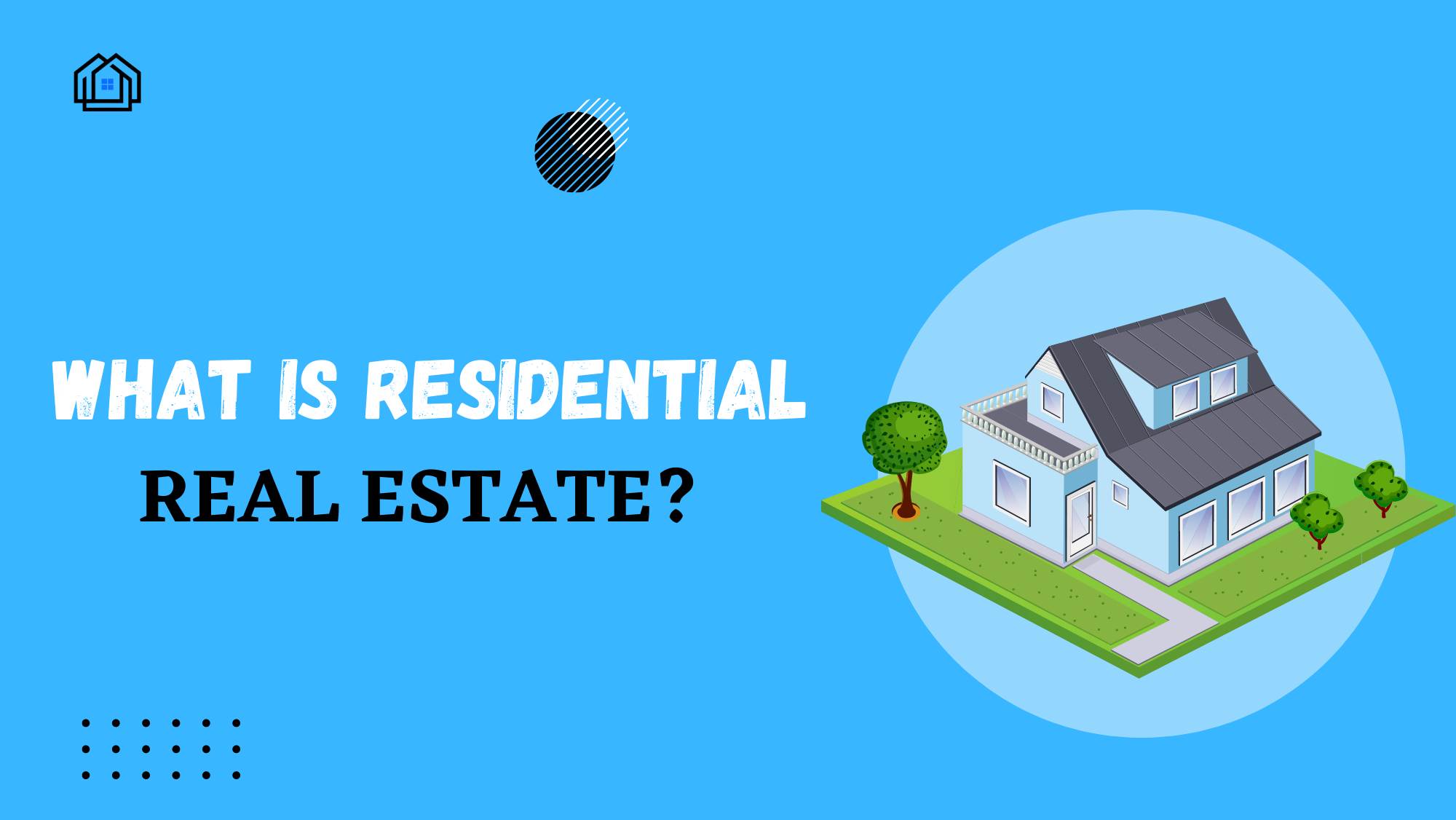Definition: residential real estate is land, and any building on it developed for residential purposes.
Examples of residential real estate include gated communities, townhouses, standalone homes, and flats developed in areas zoned for residential purposes only.
Commercial vs. Residential Real Estate
There is a mixed up on a residential and commercial real estate, maybe because they, at times, look similar or due to the development of mixed-use properties. However, they differ in their primary purpose. Check them out:
| Residential real estate | Commercial real estate |
| It consists of multifamily residences/ gated communities, townhouses, standalone houses, etc. | Including apartments, hotels, office buildings, grocery stores, etc |
| It is purposely zoned for residential purposes | It is designated for commercial purposes only |
| Can be developed for sale or rental | Commercial real estate is mainly developed for rental purposes |
Pros and Cons of Residential Real Estate
Like all types of investments, residential real estate investment has its share of pros and cons; check them out:
Pros of Residential Real Estate
1. Larger tenant and buyer pool
It is easier to prosper as a residential real estate investor because as long as your pricing is reasonable, there is always a person looking to buy or rent a house.
The increased rate of urbanization has led to an evident increase in residential housing demand in small and big cities. As a result, residential real estate remains the most rewarding in terms of consistent cash flow.
2. Consistent performance
Residential real estate is not likely to be badly impacted by the economic crisis. Although it is not immune to its effect, people will always need shelter, making it the most reliable.
3. Low entry barrier
While real estate is generally costly, investing in residential real estate is relatively lower. Suppose you are looking for a real estate investment with a low capital requirement; residential real estate is the way to go.
In addition to having low capital requirements, residential real estate has several financing options besides personal savings. You can consider the typical bank loan or a moratorium on development loans.
The moratorium on development loans is less stressful since the property can fully finance the loan upon completion.
4. Low management cost
Residential real estate management costs are relatively low compared to commercial and industrial real estate. However, you must conduct tenant screening to ensure that you get quality tenants who can take care of the property, reducing wear and tear. As a result, you will have reduced repairs required during lease renewals.
5. Low property tax
Real estate is taxed differently, and residential properties have lower taxes than commercial real estate. Also, different residential properties are taxed differently, making it a requirement to familiarize yourself with the tax regulations for each property type.
Additionally, the residential property enjoys tax deductions on mortgage interest, depreciation, passive losses, and maintenance expenses, among others.
6. Retains resale value
Real estate tends to depreciate with time if exposed to damages and poor maintenance. However, well-maintained residential real estate will hold a higher resale value, mainly if located in a booming neighborhood.
7. Lenient zoning laws
Residential real estate enjoys less strict zoning laws compared to commercial real estate. In most cases, investors develop mixed-use properties in residential areas, which is not the case with commercial and industrial real estate.
8. Potential for growth
One of the many benefits of residential real estate is using debts to increase your purchasing power. As an investor, you can use one property as leverage to purchase the next one; as the number of properties increases, your cash outlay decreases significantly if the property values have grown enough to buy the next property.
Cons of Residential Real Estate
1. Possible decrease in ROI
While residential real estate guarantees constant cash flow, it is negatively impacted by a high rate of vacancies. You will face a gradual cash flow decline when a lease agreement ends when dealing with standalone houses. Although multifamily residences are not immune to vacancy issues, landlords can still pay expenses with income from other units.
You can reduce the impact of vacancies by advertising the vacant house once you receive the vacating notice from the tenant. Also, you can hire a real estate management company; they are highly experienced in finding a quality tenant who can rent for longer.
2. Limited land size
As the land for development decreases, real estate developers reduce home compounds to a quarter or 50*100 parcel of land. Others prefer building upwards instead of looking for more land. If you own such properties (apartments or homes with limited space), you will not attract tenants looking for homes with extensive compounds.
While it is not much you can do about the available land, choosing the location wisely when developing or purchasing your property is prudent. Areas with high demand have lower vacancy rates.
3. Hard to add value
While commercial tenants are willing to pay extra coins to have their working space improved, residential tenants will not. If you, as a landlord, are not willing to invest in the improvement of the property, it will lose its value with time. However, it is good to remember that the property is yours, and the maintenance responsibility is yours too. With this, you can invest in adding value to the property when needed without getting funding from the tenants.
4. Low profits
Although residential real estate guarantees consistent cash flow, it has lower profitability potential compared to commercial real estate. Why? Most states have rules and regulations on the maximum rent a landlord can charge tenants. While this approach is suitable for the tenants, it is a limitation to landlords who would wish to charge more rent to increase their income.
Besides being regulated by the government, residential real estate is highly competitive, with more innovative investors introducing elegant houses with more amenities. If you do not improve your property value, tenants tend to move to newly built homes seeking better and more luxurious features.
Overview of Residential Real Estate in Kenya
Residential real estate is one of the sectors experiencing the highest demand, thanks to the rapid population growth in urban centers. As a result, it has taken the central position in Kenya’s real estate market with an evident increase in decent, affordable, and secure housing. There is also a significant increase in homeowners in various towns and cities.
Check out the factors leading to the upward trend in residential real estate in Kenya:
1. Demographic
Kenyan towns and cities have been experiencing rapid population growth for decades due to climate changes affecting the agriculture sector. People are constantly moving to urban areas in search of greener pastures. As a result, the demand for housing is evident, especially in areas near the CBD and the industrial regions, which middle and low-income earners highly prefer.
To meet the demand for residential housing, entrepreneurial-minded investors have successfully ventured into developing rental houses. These areas are also the most preferred by investors for ensuring maximum returns since the housing demand never seems to decline.
2. Improved infrastructure
For the longest time, Kenya had many inaccessible residential neighborhoods, especially the slam areas. As a result, it wasn’t easy even for investors to venture into those areas. As the government ventured into improving the road network, these areas were opened up for development attracting many investors.
In addition to the road network, the county governments have invested in providing residential areas with water, improving the drainage system, and promoting adequate electricity connections. As the areas become resident friendly, they attract housing investors and people looking to build private homes.
3. Improved housing
While the cost of living affects housing affordability, rental prices are also a key factor. Most real estate investors have realized this fact and ventured into developing affordable houses covering all classes of people. Instead of developing single-family homes, most real estate investors resort to building flats with mixed house sizes to attract diverse classes of people.
In addition to affordable rentals, residential real estate has introduced multiple ways to encourage people to become homeowners. For example, many home sellers have adopted seller financing options that allow home buyers to purchase properties in installments.
4. Improved security
Security is among many critical factors when choosing residential areas. People are looking for secure neighborhoods. Respectively, gated communities that are considered more secure due to their features are increasingly gaining popularity. Whether for sale or rent, safe areas are the most sought after, encouraging investors to develop more gated courts.
5. Availability of financial aid
Residential real estate development involves many expenses, including land purchase, construction materials cost, labor, professional fees, etc. These expenses can overwhelm an investor. The good news is that Kenya has numerous real estate financing options that help the industry grow. For example, several commercial banks offer residential real estate investors a moratorium on development loans.
This financial aid has significantly impacted Kenya’s residential real estate growth since, with as low as 30% of the total construction cost, an investor can have their development completed without the pressure of paying the principal sum.
Summary
Kenya’s residential real estate has come a long way from extensive ‘Mabati housed neighborhood’ to secure gated neighborhoods with elegant houses. This is an excellent achievement in the housing sector.



